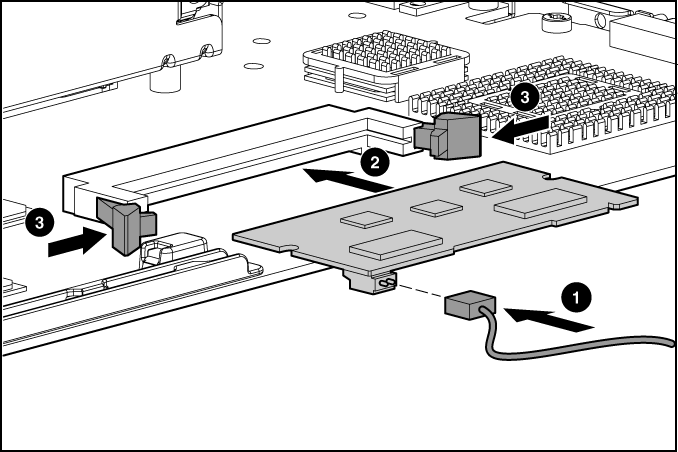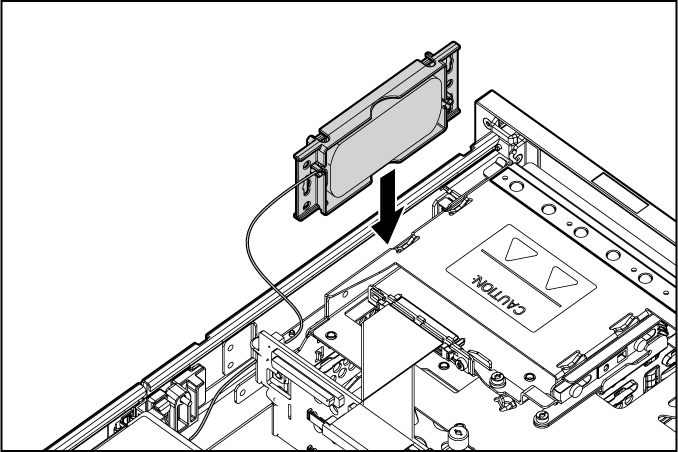 NOTE: This feature applies only to SCSI models.
NOTE: This feature applies only to SCSI models.
Along with the cache module, the battery pack provides transportable data protection, increases overall controller performance, and maintains any cached data for up to 72 hours. The NiMH batteries in the battery pack are continuously recharged through a trickle-charging process whenever the system power is on.
For information on BBWC LEDs, refer to "Battery-backed write cache LEDs" and "Battery-backed write cache LED statuses."
 CAUTION: To prevent a server malfunction or damage
to the equipment, do not add or remove the battery pack while an
array capacity expansion, RAID level migration, or stripe size
migration is in progress.
CAUTION: To prevent a server malfunction or damage
to the equipment, do not add or remove the battery pack while an
array capacity expansion, RAID level migration, or stripe size
migration is in progress.
 CAUTION: After the server is powered down, wait 15
seconds and then check the amber LED before unplugging the cable
from the cache module. If the amber LED blinks after 15 seconds, do
not remove the cable from the cache module. The cache module is
backing up data, and data is lost if the cable is detached.
CAUTION: After the server is powered down, wait 15
seconds and then check the amber LED before unplugging the cable
from the cache module. If the amber LED blinks after 15 seconds, do
not remove the cable from the cache module. The cache module is
backing up data, and data is lost if the cable is detached.
 IMPORTANT: The battery pack might have a low charge
when installed. In this case, a POST error message is displayed when the server
is powered up, indicating that the battery pack is temporarily
disabled. No action is necessary on your part. The internal
circuitry automatically recharges the batteries and enables the
battery pack. This process might take up to four hours. During this
time, the cache module functions properly, but without the
performance advantage of the battery pack.
IMPORTANT: The battery pack might have a low charge
when installed. In this case, a POST error message is displayed when the server
is powered up, indicating that the battery pack is temporarily
disabled. No action is necessary on your part. The internal
circuitry automatically recharges the batteries and enables the
battery pack. This process might take up to four hours. During this
time, the cache module functions properly, but without the
performance advantage of the battery pack.
 NOTE: The data protection and the time limit also
apply if a power outage occurs. When power is restored to the
system, an initialization process writes the preserved data to the
hard drives.
NOTE: The data protection and the time limit also
apply if a power outage occurs. When power is restored to the
system, an initialization process writes the preserved data to the
hard drives.
To install the BBWC:


Refer to the option documentation for more information.